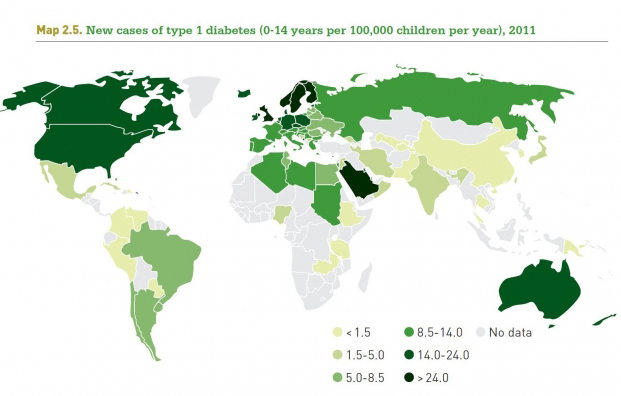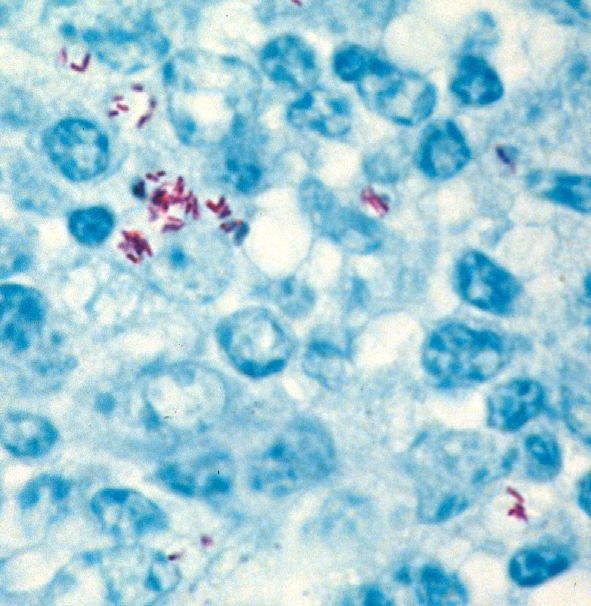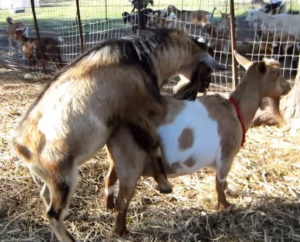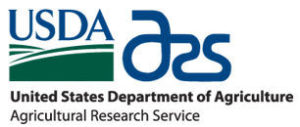HEALTHY COWS - HEALTHY KIDS
2019-11-03 17:17:40 In the journal Microorganisms, Dr. C.T. Dow and L.A. Sechi present a hypothesis paper titled: Cows Get Crohn’s Disease and They’re Giving Us Diabetes. This 10-page article with 111 references was published 17-OCT-2019 and is an Open Access article and is a very worthy read.
In the journal Microorganisms, Dr. C.T. Dow and L.A. Sechi present a hypothesis paper titled: Cows Get Crohn’s Disease and They’re Giving Us Diabetes. This 10-page article with 111 references was published 17-OCT-2019 and is an Open Access article and is a very worthy read.
Abstract
Increasingly, Johne’s disease of ruminants and human Crohn’s disease are regarded as the same infectious disease: paratuberculosis. Mycobacterium avium ss. paratuberculosis (MAP) is the cause of Johne’s and is the most commonly linked infectious cause of Crohn’s disease. Humans are broadly exposed to MAP in dairy products and in the environment. MAP has been found within granulomas such as Crohn’s disease and can stimulate autoantibodies in diseases such as type 1 diabetes (T1D) and Hashimoto’s thyroiditis. Moreover, beyond Crohn’s and T1D, MAP is increasingly associated with a host of autoimmune diseases. This article suggests near equivalency between paucibacillary Johne’s disease of ruminant animals and human Crohn’s disease and implicates MAP zoonosis beyond Crohn’s disease to include T1D.
Facts to know:
Worldwide, the incidence of T1D is increasing. Over the last 25 years, the incidence went up by over 12%. It was 10.9 per 100,000 among children aged 0-14 years in 1990 and rose to 22.5 per 100,000 in 2009. (Type 1 Diabetes Statistics)
The current prevailing paradigm on the etiology of T1D hypothesizes that environmentally triggered autoimmune destruction of pancreatic beta cells occurs against the background of genetic risk. (Endocrinol Metab Clin North Am. 2010 Sep; 39(3): 481–497).
Comment:
Healthy food comes from healthy animals. It is a reasonable consumer expectation that foods do not harbor zoonotic pathogens, and MAP has earned the zoonotic pathogen designation. The most direct approach to provide dairy and meat products free of MAP is to place multiple hurdles between the primary source of MAP (infected ruminants) and consumers, a basic HACCP principle. The first and most essential hurdle is at the farm gate. Raw milk and meat should originate from animals that are not MAP-infected (at the very least test-negative for JD at the time of harvest). This will not guarantee the raw products are absolutely MAP-free but it does insure that the bioburden of MAP is far lower than it currently is. Then downstream food processing methods, such as pasteurization, are more likely to kill or remove and residual MAP.
Animal agriculture and veterinary medicine have all the necessary diagnostic tools and disease epidemiology knowledge to achieve this goal, and multiple countries have national programs that can support this endeavor. This same approach has worked to prevent humans from getting tuberculosis and brucellosis from cows. The time has come to stop MAP on the farm as step #1 in preventing contamination our food supply. Read more about certifying herds based on MAP infection status this here.
The map at the top of this post is from Diapedia The living Textbook of Diabetes.
JD AFFECTS COW BEHAVIOR
2019-10-29 15:33:03 Gemma Charlton & colleagues from the Animal Production, Welfare and Veterinary Sciences, Harper Adams University, Shropshire, UK report in the Journal of Dairy Science that cows testing positive for Johne’s disease by milk ELISA spend less time lying down. The authors’ correct proof first available online October 9 and is an Open Access publication.
Gemma Charlton & colleagues from the Animal Production, Welfare and Veterinary Sciences, Harper Adams University, Shropshire, UK report in the Journal of Dairy Science that cows testing positive for Johne’s disease by milk ELISA spend less time lying down. The authors’ correct proof first available online October 9 and is an Open Access publication.
Abstract
Paratuberculosis or Johne’s disease (JD) is a fatal chronic enteritis that causes detrimental effects on production and health and significantly reduces the welfare of cattle. Control of JD is highly desirable, but single milk ELISA testing may not be sensitive enough to identify all affected animals, particularly in the early stages of the disease. The objective of this study was to compare the activity of JD-positive (JD5) to JD-negative (JD0) cows from calving until wk 20 of lactation. The study was conducted at Harper Adams University, United Kingdom, using 42 multiparous [3.1 ± 0.22 (mean ± standard error of the mean); range: 2–7 lactations] Holstein Friesian cows, fitted with an IceQube accelerometer (IceRobotics Ltd., Edinburgh, UK) on the back left leg. The sensors recorded data on lying and standing time, steps, and motion index with a granularity of 15 min. In addition, start and stop times for lying bouts, and exact lying bout durations were recorded, which permits calculation of the number of lying bouts. Every 3 mo the cows were milk sampled and subsequently tested for JD using an ELISA. Cows in the infection group JD0 were classed as JD negative and cows in the infection group JD5 were classed as JD positive. Johne’s-positive cows [JD5; n = 21 (repeat ELISA positive)] were matched to negative cows [JD0; n = 21 (repeat ELISA negative)] based on lactation number and age. Around peak lactation we found differences in lying behavior. The JD5 cows spend less time lying/d during wk 7 to 11 of lactation. The largest difference observed was around wk 8 of lactation, with JD5 cows spending, on average, 2 h/d less time lying down than JD0 cows (9.3 ± 0.33 vs. 11.3 ± 0.61 h/d, respectively). The JD5 cows also had fewer lying bouts per day from wk 7 to 15 of lactation (excluding wk 13), and during wk 11 and 12 average lying bout duration was longer for JD5 cows compared with JD0 cows. No differences were observed in steps per day, milk yield, BCS, and mobility score between JD5 and JD0 cows from calving to wk 20 of lactation. As far as we are aware, this is the first study to show changes in activity of JD-positive cows. The results show that activity data from leg-mounted accelerometers has the potential to help identify JD-positive cows, although more research is required.
Comment: This study is highlighted on Johnes.org because it so novel. It merits further study using a larger number of cows, more accurate diagnostic tests and perhaps classification of test-positive cows by level of infection severity.
Why would cows with Johne’s disease lie down less? Are they uncomfortable or just looking for a bathroom? <attempted humor>
For more about cow lying down behavior follow this link.
FIRST REPORT OF IBD (1913) AND TODAY'S IBD BURDEN
2019-10-25 13:40:21 106 years ago today there appeared a 3 page report by T.K. Dalziel in the British Medical Journal (vol. 2, no. 2756, pp 1068-1070, October 25, 1913) that is widely regarded as the first report of the chronic inflammatory intestinal condition that is now called Crohn’s disease; named for the first of three authors of the 1932 report describing the pathology and clinical presentation of this regional ileitis. Dalziel describes several cases, three of which have pathology reports.
106 years ago today there appeared a 3 page report by T.K. Dalziel in the British Medical Journal (vol. 2, no. 2756, pp 1068-1070, October 25, 1913) that is widely regarded as the first report of the chronic inflammatory intestinal condition that is now called Crohn’s disease; named for the first of three authors of the 1932 report describing the pathology and clinical presentation of this regional ileitis. Dalziel describes several cases, three of which have pathology reports.
Noteworthy is that Dalziel mentions the gross and microscopic similarities of the intestines he removed from patients with those from cases of Johne’s disease in cattle. He mentions the 1895 work of Johne (misspelled as Henny) and Frothingham and cites the early work on the Johne’s disease pathology by McFadyen. The puzzling aspect is that while the pathology of the human and animal diseases is strikingly similar, acid-fact bacteria (MAP) can be seen in the animal tissues but not in the human tissues: a puzzle that remains today and is the essential feature leading some experts to view the human and animal forms of this chronic enteritis as having different causes.
Comment: It is often useful to read the original published reports to avoid perpetuating misunderstandings. However, it is often hard to obtain older literature. It is for this reason that the Johne’s Information Center highlights provides access this seminal report. This is made possible by JSTOR (short for journal storage) and we are grateful to this organization for making the article accessible.
There were 6.8 million cases of inflammatory bowel disease (IBD) globally in 2017. At the national level, the USA had the highest age-standardized prevalence rate (464 per 100,000 population), followed by the UK (450 per 100,000). This equates to roughly 1 out of every 220 people having IBD. The total years lived with disability (YLDs) attributed to IBD almost doubled over the study period, from 0.56 million in 1990 to 1.02 million in 2017. These data come from a study funded by Bill & Melinda Gates Foundation published online October 21 in Lancet Gastroenterology Hepatology. This excellent Open Access article is titled: “The global, regional, and national burden of inflammatory bowel disease in 195 countries and territories, 1990–2017: a systematic analysis for the Global Burden of Disease Study 2017”.
IBD in humans and Johne's disease (JD) in animals have both increased in prevalence globally over the past 100 years. The prevalence of IBD and JD by country are also strikingly similar. Read more about the zoonotic potential of MAP and the association of MAP and IBD here.
TESTING HUMANS FOR MAP
2019-10-20 15:29:06 Human Para’s inaugural MAP testing study is nearing completion. A total of 201 participants donated a blood sample at locations in Orlando, Philadelphia and New York City between May and September 2018. The final samples were drawn on September 10, 2018.
Human Para’s inaugural MAP testing study is nearing completion. A total of 201 participants donated a blood sample at locations in Orlando, Philadelphia and New York City between May and September 2018. The final samples were drawn on September 10, 2018.
Since this was a blinded study comprised of both IBD patients and control subjects, each sample was assigned a number and sent to 6 participating researchers. The laboratories of Dr. Saleh Naser, Dr. Tim Bull and Dr. Irene Grant received buffy coats (the white blood cell layer) which were extracted at the Temple University laboratory. They tested all positive culture samples for two PCR markers unique to MAP: IS900 and f57. More detail about the testing methodologies can be found at the Human Para Foundation website.
Comment: Zoonotic pathogens typically have their “preferred” normal host. When they infected a different, abnormal host, they often change their behavior. When MAP finds itself inside a host that is not the normal one, i.e. not a ruminant animal, it may behave in unpredictable ways. Some experts suggest that it stops making its typical thick waxy cell wall rendering it difficult to stain using normal acid-fast stains for visualizing mycobacteria and no longer looks like a rod-shaped bacterial cell. This may explain why pathologists cannot see typical acid-fast stained (red) rod shaped bacteria as shown below in a tissue section from a cow.

Diagnostic tests for MAP in humans therefore may necessarily differ in design from those tests used in animals. Hopefully, among the 6 different testing methods being evaluated at least one emerges that can effectively identify MAP infections in humans. An accurate diagnostic test for MAP in humans combined with the effective anti-MAP therapy being pioneered by RedHill Biopharma could revolutionize diagnosis and treatment of Crohn’s disease and other disease of humans linked to MAP.
LANDMARK PAPER DEFINING CROHN’S DISEASE (1932)
2019-10-18 13:29:51 Eighty-seven years ago, Burrill B. Crohn, Leon Ginzburg, and Gordon D. Oppenheimer published a paper titled Regional Ileitis – A Pathologic and Clinical Entity in the Journal of the American Medical Association (vol. 99, no. 16, pp 1323-1329, October 15, 1932). Honoring the importance of this report, the article was later reprinted as a Landmark Article in The Mount Sinai Journal of Medicine (vol 67, no. 3, pp 263-268, May 2006). We provide the original JAMA article here for users interested in reading this influential publication in its original form. Note: the reprinted version in the Mount Sinai Journal of Medicine has better print quality.
Eighty-seven years ago, Burrill B. Crohn, Leon Ginzburg, and Gordon D. Oppenheimer published a paper titled Regional Ileitis – A Pathologic and Clinical Entity in the Journal of the American Medical Association (vol. 99, no. 16, pp 1323-1329, October 15, 1932). Honoring the importance of this report, the article was later reprinted as a Landmark Article in The Mount Sinai Journal of Medicine (vol 67, no. 3, pp 263-268, May 2006). We provide the original JAMA article here for users interested in reading this influential publication in its original form. Note: the reprinted version in the Mount Sinai Journal of Medicine has better print quality.
Comment: I appreciate history more as I grow older. Also, it is important to read original published reports to avoid misquoting or perpetuating misunderstandings. Interesting note: As described in Wikipedia, Crohn always preferred the medically descriptive terms "regional ileitis" and "regional enteritis" to "Crohn's disease", but he was not able to prevent the appropriation of his name for the disease.
Without providing much detail, B.B. Crohn’s article mentions efforts to determine if Mycobacterium tuberculosis was involved in the regional ileitis cases he described including culture for M. tuberculosis, inoculation of lymph node homogenates from five patients into guinea pigs, rabbits, and chickens, and acid-fast staining of tissue sections. He concludes that M. tuberculosis was not a cause of these cases of regional ileitis. However, he never mentions the 1913 report by Dalziel or makes any mention of Mycobacterium paratuberculosis or the similarities of regional ileitis in humans to that of cattle, as described by H.A. Johne in 1895. Clearly, Dr. Crohn recognized how the pathology in his afflicted patients resembled that caused by a mycobacterial infection. How might history be different had Dr. Crohn considered the possibility M. a. paratuberculosis was the cause?
Johne's disease is a regional ileitis affecting ruminants.
Dr. Robert Greenstein compared Crohn's disease and Johne's disease in his "personal view" article published in Lancet Infectious Diseases in 2003 (Lancet Infect Dis 2003; 3:507-14).
If you are interested in the history of Johne's disease, check out our timeline of major events.
The picture of B.B. Crohn is credited to Wikipedia.
IS MAP IN SEMEN A PROBLEM?
2019-10-15 16:59:23This question was recently submitted to our website’s “Ask and Expert” feature:
 “I have a goat buck who has tested positive for Johne's. If the diagnosis is confirmed, is it OK to collect his semen to store and use for AI purposes? Or can it spread the disease? Should I wait a couple of years before using it to be sure that it is safe?”
“I have a goat buck who has tested positive for Johne's. If the diagnosis is confirmed, is it OK to collect his semen to store and use for AI purposes? Or can it spread the disease? Should I wait a couple of years before using it to be sure that it is safe?”
How would you answer this goat owner?
There are many reports that bulls (bovine) infected with MAP have the organism in their semen and accessory sex glands. Research publication examples include the following:
- AB Larsen. Mycobacterium paratuberculosis in reproductive organs and semen of bulls. Am. J. Vet.Res. 31:255, 1970.
- WY Ayele. Distribution of Mycobacterium subsp. paratuberculosis in organs of naturally infected bull-calves and breeding bulls. Vet. Microbiol. 103:209, 2004.
- JL Kohl. Consecutive excretion of Mycobacterium avium subspecies paratuberculosis in semen of a breeding bull compared to the distribution in feces, tissue and blood by IS900 and F57 quantitative real-time PCR and culture examinations. J. Vet. Med. Sci. 72:1283, 2010.
- P Münster. A Longitudinal study to characterize the distribution patterns of Mycobacterium avium ssp. paratuberculosis in semen, blood and faeces of a naturally infected bull by IS900 semi‐nested and quantitative real‐time PCR. Transboundary and Emerging Diseases. 60:175, 2013.
While it seems that there is consensus that MAP is found in the semen of infected bulls, a search of scientific literature indicates that only Dr. Richard Merkal tackled the question of what the consequences are for the cow inseminated with MAP-contaminated semen (RS Merkal. Intrauterine inoculation of Mycobacterium paratuberculosis into guinea pigs and cattle. Am. J. Vet. Res. 43:676, 1982).
The study was small (3 cattle) and used a large intrauterine inoculum, 5x108 MAP, and necropsied the cattle up to 4 weeks post-inoculation. MAP was recovered from the body and horns of the uterus of inoculated cattle at 1, 2, 3, and 7 days post-inoculation and from a pelvic lymph node of one cow necropsied 2 weeks post-inoculation but not from tissues of cattle inoculated at 3 and 4 weeks post-inoculation. [The article is provided in full here because of its age and uniqueness. Apologies for the poor photocopy quality.]
Comment: In my answer to the goat owner’s question I explained that I was not aware of any research that directly addressed this question in goats but that I did have information on cattle (some cited above). Based on this, I suggested that the semen itself was probably of minimal concern: best summarized as “wrong end & wrong age”. I also explained that the feces of the infected buck were of greater concern.
Although Merkal’s study raises some concerns, the uterus is the wrong end (oral being the preferred route of infection by MAP) and only adult (post-puberty) animals are inseminated and as such are more resistant to MAP infection than young animals, i.e. wrong age.
However, I think this highlights a knowledge gap in our understanding about Johne’s disease. This has major significance for the artificial insemination (AI) industry and for countries like Sweden that are free of MAP infections in cattle and risk importation of the infection. And, we obviously know even less about MAP in goat bucks.
TESTING FOR BOVINE TB AFFECTS TESTS FOR JD
2019-10-09 18:45:41Research Article
 In a collaboration between the University of Minnesota and scientists in Spain and The Netherlands, Catalina Picasso-Risso and colleagues report on the association between results of diagnostic tests for bovine tuberculosis and Johne’s disease in cattle. Their reports is published in Veterinary Record and first appeared online 25-SEP-2019.
In a collaboration between the University of Minnesota and scientists in Spain and The Netherlands, Catalina Picasso-Risso and colleagues report on the association between results of diagnostic tests for bovine tuberculosis and Johne’s disease in cattle. Their reports is published in Veterinary Record and first appeared online 25-SEP-2019.
Abstract
Background: Bovine tuberculosis (bTB) diagnosis is impaired by numerous factors including cross-reactivity with Mycobacterium avium subspecies paratuberculosis, which causes Johne’s disease (JD). In addition, the effect of repeated bTB-intradermal testing on the performance of JD diagnostic tests is not fully understood. This study aimed to evaluate the impact of repeated bTB-intradermal tests under field conditions in Spain on the JD serological status of cattle.
Methods: bTB-positive herds (n=264) from Castilla-y-Leon region were selected and matched with officially tuberculosis-free control herds. The association between JD and bTB status at the herd level was assessed using conditional logistic regression and, in herds with both JD-positive and bTB-positive animals, a Bayesian hierarchical mixed-effect model was used for individual-level analysis.
Results: A significantly higher risk of being JD positive (OR: 1.48; 95 per cent CI: 1.01 to 2.15) was found for bTB-positive herds compared with controls. Individual results indicated that cattle tested more than three times per year, within the last 90 days and more than 12 months were more likely to be JD positive. A skin test-related boost in antibody response could be the cause of an apparent increase of the sensitivity of the JD-absorbed ELISA.
Conclusion: The results demonstrate the interaction between bTB repeated testing and JD individual and herd-level results and this improved knowledge will facilitate the design of more effective control programmes in herds co-infected with two of the most important endemic diseases affecting cattle in Spain.
Comment
Spain is not alone in facing the dual challenge of trying to control both JD and bTB and this publication is important in helping veterinarians diagnose these two important cattle diseases without unknowingly causing an interference between diagnostic tests. Unfortunately, this article is not Open Access.
RISK FACTORS FOR JOHNE’S IN GOATS
2019-09-30 17:18:06Research Report
 B. Barrero-Domínguez and 7 colleagues from the Animal Health Department, University of Cordoba Faculty of Veterinary, Cordoba, Spain reported on a study of dairy goat flocks. The publication appears in the Veterinary Record - first online
B. Barrero-Domínguez and 7 colleagues from the Animal Health Department, University of Cordoba Faculty of Veterinary, Cordoba, Spain reported on a study of dairy goat flocks. The publication appears in the Veterinary Record - first online
Abstract
Background: Paratuberculosis (PTB) is a chronic, enteric wasting disease of ruminants caused by Mycobacterium avium subspecies paratuberculosis (MAP), with a worldwide distribution. Andalusia, located in southern Spain, is one of the European regions with the highest goat census and the highest milk production; however, current data on the prevalence of MAP in this species are not available.
Methods: A cross-sectional study was performed to determine the seroprevalence and risk factors associated with PTB in dairy goat flocks from southern Spain. A total of 3312 serum samples were collected from 48 flocks located in three different geographical areas. Health and productive parameters were surveyed during the visit to the herds.
Results: A total of 511 goats were seropositive, with overall true seroprevalence of 22.54 per cent (95 per cent confidence interval (CI95 21.12–23.97). Of the goat herds, 87.50 per cent (CI95 78.14–96.98) were seropositive. The intra-herd seroprevalence was 25.43±31.71, distributed as follows: 22 flocks with a seroprevalence under 10%; 18 flocks between 10% and 50%; and eight flocks with a frequency over 50%. Multivariate logistic regression showed significant association between PTB seropositivity and the following variables: intensive production system, lack of management by batches, inappropriate ventilation and seropositivity to caprine arthritis encephalitis virus (CAEV).
Conclusions: The results indicate a widespread PTB infection in goat herds in southern Spain. Thus, control programmes must include management and sanitary measures to reduce the prevalence. Further experimental studies are necessary to determine the influence of CAEV-PTB coinfection on immune status.
Comment: This is yet another report illustrating that the MAP infection rate in goats is high. These findings in Spain are comparable to those by Bauman et al. in Ontario Canada (Canadian Veterinary Journal, 2016). What is very concerning is that consumers commonly consider that goat milk has superior health benefits. Given these high infection rates in goats and that MAP can infect humans and can survive pasteurization and cheese production, goat milk may not be as healthy a choice as many consumers think.
DIAGNOSTIC TESTING PATTERNS IN DAIRY CATTLE
2019-09-24 15:07:03Research Report – OPEN ACCESS
 Nora Navarro-Gonzalez and 12 colleagues from BIOEPAR, INRA, Oniris, 44307, Nantes, France just published an article describing diagnostic testing patterns for paratuberculosis in naturally infected dairy cattle. The publication, titled “Longitudinal study of Mycobacterium avium ssp. paratuberculosis fecal shedding patterns and concurrent serological patterns in naturally infected dairy cattle“, appears in the Journal of Dairy Science October issue (vol 102, issue 10, pages 9117-9137.
Nora Navarro-Gonzalez and 12 colleagues from BIOEPAR, INRA, Oniris, 44307, Nantes, France just published an article describing diagnostic testing patterns for paratuberculosis in naturally infected dairy cattle. The publication, titled “Longitudinal study of Mycobacterium avium ssp. paratuberculosis fecal shedding patterns and concurrent serological patterns in naturally infected dairy cattle“, appears in the Journal of Dairy Science October issue (vol 102, issue 10, pages 9117-9137.
Abstract
Mycobacterium avium ssp. paratuberculosis (MAP) is the etiological agent of paratuberculosis, a disease that affects ruminants worldwide. Despite global interest in the control of this disease, gaps exist in our knowledge of fecal shedding patterns and concurrent serological patterns. This longitudinal study in dairy cattle herds with high MAP seroprevalence in France aimed at accurately describing fecal shedding patterns over 1 year; relating those shedding patterns to individual animal characteristics (age, breed, parity); and exploring the association between fecal shedding patterns and serological patterns. To describe temporal fecal shedding patterns and continuity of shedding, along with the standard quantitative PCR (qPCR) threshold cycle we used a cutoff value that related to low or nonculturable fecal shedding. We also defined a threshold cycle indicative of shedding in high quantities to describe infection progression patterns. Twenty-one herds completed the study, and 782 cows were tested 4 times each. We obtained 4 sets of paired fecal qPCR and serum ELISA results from 757 cows. Although we targeted highly likely infectious animals, we found a large diversity of shedding patterns, as well as high variability between herds in the proportion of animals showing a given pattern. The fecal qPCR results of almost 20% of the final study sample were positioned at least once in the range that indicated low or nonculturable fecal shedding (between the adjusted and the standard cutoff value). Although these animals would typically be classified as non-shedders, they could be important to infection dynamics on the farm. Animals that shed at least twice consecutively and animals that shed in high quantities rarely reverted to negativity. Repeated fecal qPCR can be used to detect temporal fecal shedding traits, and the decision to cull an animal could practically be based on temporal, semiquantitative results. Overall, we found a mismatch between fecal shedding and ELISA seropositivity (637 animals were ELISA-negative 4 times, but only 13% of those animals were qPCR-negative 4 times). We found that having more than 2 ELISA-positive samples was strongly related to persistent and continuous shedding. We suggest that although serological testing is much less sensitive than qPCR, it can also be used, particularly over the course of multiple testing events, to identify animals that are most likely to contribute to the contamination of the farm environment.
Comment: This is another important contribution that highlights the importance of a regular testing program in dairy herds and the higher sensitivity of qPCR over ELISA methods for MAP infection detection. Sample pooling makes the cost of qPCR testing almost the same as that of ELISA testing (depending on the laboratory used) and offers far higher diagnostic accuracy, i.e. “more bang for the buck”! However, samples must be pooled by the testing lab, and be pooled according to animal age (animals of similar birth dates pooled together). Laboratories should be contacted to discuss how samples should be submitted to achieve this age-based pooling.
For more about strategic polling of fecal samples form dairy cattle see the article published in 2000 by Dr. Kees Kalis in the Journal of Veterinary Diagnostic Investigation 12:547-551.
JOHNE'S IN CAPTIVE DEER
2019-09-17 16:38:18Research Report
 Dr. Mitch Palmer and colleagues from the USDA-ARS National Animal Disease Center in Ames, IA, USA. just published an article describing diagnostic testing patterns for paratuberculosis in a captive white-tailed deer farm in the U.S. The publication titled “Characteristics of subclinical Mycobacterium avium ssp. paratuberculosis infection in a captive white-tailed deer herd“ appears in the Journal of Veterinary Diagnostic Investigations; first published online September 11, 2019.
Dr. Mitch Palmer and colleagues from the USDA-ARS National Animal Disease Center in Ames, IA, USA. just published an article describing diagnostic testing patterns for paratuberculosis in a captive white-tailed deer farm in the U.S. The publication titled “Characteristics of subclinical Mycobacterium avium ssp. paratuberculosis infection in a captive white-tailed deer herd“ appears in the Journal of Veterinary Diagnostic Investigations; first published online September 11, 2019.
Abstract
Paratuberculosis (Johne’s disease) is caused by Mycobacterium avium ssp. paratuberculosis (MAP), and affects both domestic and wild ruminants, including cattle, goats, sheep, and deer. In cattle, most infections occur during calfhood followed by a prolonged incubation period of 1–2 y or more before cows shed culturable numbers of MAP bacilli in their feces. As disease progresses, infected animals develop protein-losing enteropathy, intractable diarrhea, and weight loss. In a cohort of 32 clinically normal deer from a herd with a history of periodic clinical paratuberculosis, we found that subclinical infection was characterized by high rates of infection, common involvement of mesenteric lymph nodes, minimal lesion formation, few intralesional acid-fast bacilli, and low-level fecal shedding of MAP. The characteristics of subclinical paratuberculosis in white-tailed deer resemble those of cattle and red deer, although microscopic lesions were less common in subclinical deer than reported for subclinical cattle, and we did not see necrotizing granulomas as described in subclinical red deer and elk.
Comment: This is another important contribution that highlights how different animal species handle MAP infections differently and that a prolonged period where animals are infectious (shedding MAP in feces) while appearing clinically normal fosters continued spread of the infection within and among animal herds. Unfortunately this article is not open access.
« Previous 1 … 11 12 13 14 15 … 18 Next »